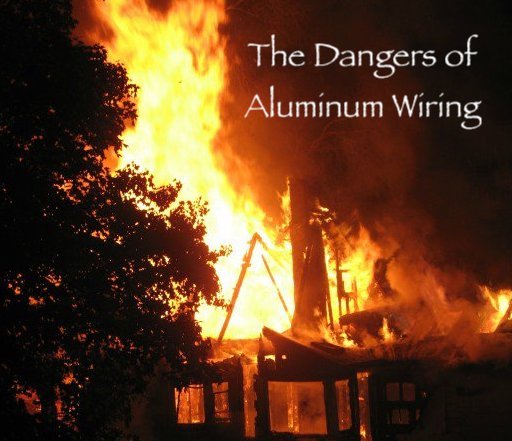Aluminum Wiring
Did you know that in the 1960's to mid-70's old aluminum wire was used in North America for wiring entire houses? Aluminum wire was widely used as an alternative conductor during a period of high copper prices and many old installations are downright dangerous!
New Aluminum Wiring
Aluminum building wiring is a type of electrical wiring for residential construction or houses that uses aluminum electrical conductors. Since aluminum provides a better conductivity to weight ratio than copper it is commonly used today for wiring power grids, including overhead power transmission lines and local power distribution lines, as well as for power wiring of some airplanes.
Utility companies have used aluminum wire for electrical transmission in power grids since around the late 1800s to the early 1900s. It has cost and weight advantages over copper wires. Aluminum wire in power transmission and distribution applications is still the preferred material today.
Old Aluminum Wiring
Unfortunately, electrical devices (outlets, switches, lighting, fans, etc.) in the 1960's & 70's were not designed with the properties of the aluminum wire in mind. As a result, there were some issues related to the properties of the wire itself, making the installations with aluminum wire much more susceptible to problems.
Revised manufacturing standards for both the wire and devices were developed to reduce problems. Still, existing homes with this older aluminum wiring used in branch circuits present a potential fire hazard.
What Makes Old Aluminum Wire Dangerous?
Although aluminum wire was given the go-ahead in the 1940’s, there were concerns... like aluminum wiring was much softer than copper. Residential aluminum wiring was unable to withstand some of the stress when it was being pulled, it was also subject to breaking if it was nicked or bent. It also had to be at least one wire gauge larger than copper for each electrical current rating. Because aluminum expands and contracts at a different rate than copper, and because switches and receptacles were designed for copper’s rate of expansion and contraction - the main problems were the metal on the screw terminals causing oxidation, heating, expansion and contraction, making the terminals loose on the receptacles and switches.
“Electrical devices (outlets, switches, lighting, fans, etc.) at the time were not designed with the properties of the aluminum wire being used in mind, and there were some issues related to the properties of the wire itself, making the installations with aluminum wire much more susceptible to problems.” - inspectapedia.com
Aluminum Wire Today
Aluminum wiring is still used toady on large circuits that don’t require as many terminations to various devices. Electrical contractors still use aluminum for feeders to panels and large appliances such as electric furnaces. Even engineers specify aluminum wiring on large feeders and branch circuits in buildings. These circuits are commonly terminated in disconnects and electrical panels with lugs that are rated and suitable for aluminum wiring.
Old to New
During a housing construction boom in the early 60's in North America - coupled with the price of copper spiking, (old) aluminum building wire was manufactured using utility grade AA-1350 aluminum alloy in sizes small enough to be used for lower load branch circuits in homes.
In the late 60's problems and failures related to branch circuit connections for building wire made with the (old) utility grade AA-1350 alloy aluminum began to surface. Aluminum wire was re-evaluated and new alloys were developed to produce (new) aluminum building wire.
The first 8000 series electric conductor alloy, still widely used in some applications, was developed and patented in 1972 by Aluminum Company of America. This alloy, along with AA-8030 (patented by Olin in 1973) and AA-8176 (patented by Southwire in 1975 and 1980) perform mechanically like copper.
So since the term 'Aluminum wire' can make one suspicious... remember that OLD aluminum wiring is the culprit for so many problems - due to faulty installation, incompatible materials, and lack of maintenance.
What To Do If Your Home Has Old Wiring?
If your home was built in between 1960 and 1972 you most likely have old AA-1350 aluminum wiring. Stay ahead of a potential disaster and get your wiring checked by a professional.
Need your place inspected? Put your mind at ease and Call Trent @ Reisinger Electric - he can tell if you have the old AA-1350 aluminum wire, old branch circuit wiring or old electrical devices.



